What do I need to know about a tree nut allergy

Embarking on managing a tree nut allergy can feel like navigating a culinary maze—your safety hinges on knowing the ins and outs of the foods you encounter daily. Our comprehensive tree nut allergy list is your go-to guide, helping you identify the usual suspects and unveil those sneaky hazards that might be hiding in plain sight. Knowledge is not just power; it’s your shield against potential allergens.
Navigating Tree Nut Allergy: Symptoms and Diagnosis 
Living with a tree nut allergy requires a heightened awareness of the choices you make every day. It’s more than just steering clear of the nuts themselves; it’s about recognizing the potential triggers and symptoms that may arise. Here’s a closer look at navigating a tree nut allergy, understanding the symptoms, and delving into the extensive list of foods to avoid.
Symptoms and Diagnosis
Recognizing the symptoms of a tree nut allergy is the first line of defense. These may include itching, swelling, difficulty breathing, gastrointestinal discomfort, or even more severe reactions like anaphylaxis. The importance of swift action cannot be overstated – if you experience any of these symptoms, seek immediate medical attention.
Immediate Allergic Reactions
Immediate allergic reactions to tree nuts can vary from mild symptoms like hives and itching to more severe issues such as difficulty breathing and anaphylaxis. It’s important to understand these different symptoms so that quick action can be taken for intervention and treatment.
Delayed or Chronic Reactions
Some people may experience delayed or chronic allergic reactions to tree nuts, which can be tricky to diagnose. Awareness of these delayed responses is crucial for individuals and healthcare professionals to ensure thorough and effective management.
Diagnostic Methods (e.g., skin tests, blood tests) 
Diagnostic methods are tools that help identify and manage tree nut allergies. These methods provide important information about how an individual’s immune system responds to specific tree nuts, leading to accurate diagnosis and personalized treatment plans. Two main diagnostic methods for identifying tree nut allergies are skin and blood tests.
- Skin Tests:Skin tests, like patch tests, are common for identifying tree nut allergies. In this test, small amounts of tree nut extracts are applied to the skin with a tiny needle. If someone is allergic, the skin in that area will react with redness, swelling, or itching. Patch tests involve applying allergens to the skin to observe delayed reactions. These tests are valuable for quickly determining allergic sensitivities and providing immediate results, helping healthcare professionals create timely and accurate treatment plans.
- Blood Tests:Blood tests, such as the specific IgE (Immunoglobulin E) test, measure the levels of antibodies produced in response to tree nut allergens. Higher IgE levels indicate sensitivities or allergies to particular tree nuts. Blood tests are beneficial when skin tests are impractical or inconclusive, offering an alternative method to identify allergies. These tests are advantageous for individuals with skin conditions or those taking medications that might interfere with skin test results
Common Tree Nuts and Their Allergenic Potential
List of Tree Nuts
- Almonds:
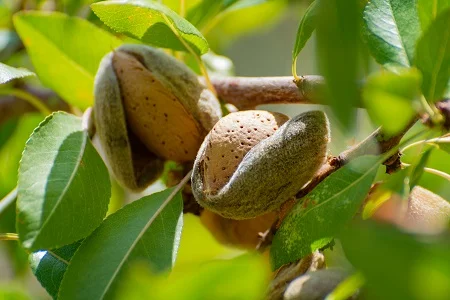 Almonds are super versatile and healthy nuts. You can find them in various forms, like whole almonds, almond butter, or almond milk. It’s essential to recognize almonds in different foods because they are used in sweet and savoury dishes.
Almonds are super versatile and healthy nuts. You can find them in various forms, like whole almonds, almond butter, or almond milk. It’s essential to recognize almonds in different foods because they are used in sweet and savoury dishes. - Walnuts:
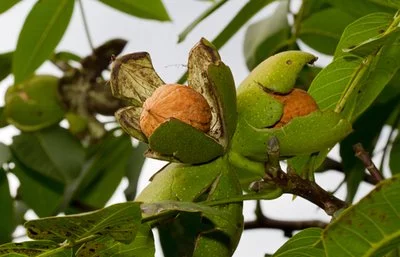 Walnuts have a unique shape and a rich flavour. People often use them in salads, baked goods, and snacks. Because of their unique texture and omega-3 fatty acids, they are popular, but those with nut allergies need to be careful to avoid them.
Walnuts have a unique shape and a rich flavour. People often use them in salads, baked goods, and snacks. Because of their unique texture and omega-3 fatty acids, they are popular, but those with nut allergies need to be careful to avoid them. - Cashews:
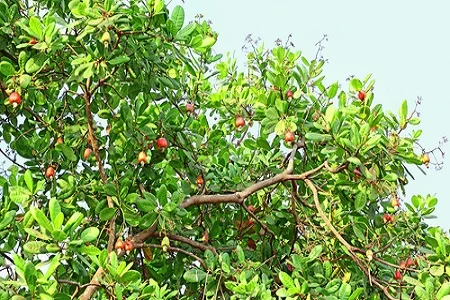 Cashews have a buttery taste and a creamy texture. They are used in many foods and snacks, like cashew butter or as a standalone snack. People with nut allergies should be careful not to eat cashews in different food products accidentally.
Cashews have a buttery taste and a creamy texture. They are used in many foods and snacks, like cashew butter or as a standalone snack. People with nut allergies should be careful not to eat cashews in different food products accidentally. - Hazelnuts:
 Hazelnuts are linked with chocolate and desserts and have a sweet and nutty flavour. Besides being used in sweets, they can be in spreads, coffee flavourings, and some savoury dishes. People with nut allergies need to be cautious with hazelnuts.
Hazelnuts are linked with chocolate and desserts and have a sweet and nutty flavour. Besides being used in sweets, they can be in spreads, coffee flavourings, and some savoury dishes. People with nut allergies need to be cautious with hazelnuts. - Pistachios:
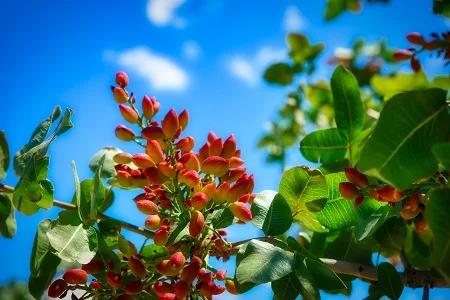 Pistachios are known for their bright green colour and unique taste. People enjoy them as snacks, in desserts, or added to various dishes. Those with nut allergies should know that pistachios can be found in sweet and savoury foods.
Pistachios are known for their bright green colour and unique taste. People enjoy them as snacks, in desserts, or added to various dishes. Those with nut allergies should know that pistachios can be found in sweet and savoury foods. - Pecans:
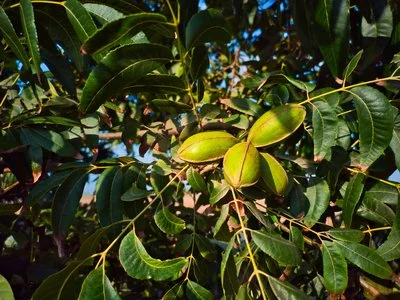 Pecans have a rich, buttery flavour and are often used in pies, baked goods, and snacks. Because they are so versatile in cooking, it’s essential for people with nut allergies to pay close attention and avoid accidental exposure.
Pecans have a rich, buttery flavour and are often used in pies, baked goods, and snacks. Because they are so versatile in cooking, it’s essential for people with nut allergies to pay close attention and avoid accidental exposure. - Brazil Nuts:
 Brazil nuts are large and contain a lot of selenium. While not as common as some other nuts, they are present in specific recipes and snack mixes. People with allergies should be vigilant in identifying and avoiding them.
Brazil nuts are large and contain a lot of selenium. While not as common as some other nuts, they are present in specific recipes and snack mixes. People with allergies should be vigilant in identifying and avoiding them. - Macadamia Nuts:
 Macadamia nuts have a creamy texture and a mild, buttery flavour. They are used in desserts and various cuisines. People with nut allergies need to recognize and avoid them.
Macadamia nuts have a creamy texture and a mild, buttery flavour. They are used in desserts and various cuisines. People with nut allergies need to recognize and avoid them.
Living with Tree Nut Allergies
Living with tree nut allergies means being proactive and informed to stay safe, reduce risks, and lead a healthy life. Ecoindoorgardening covers important aspects of managing tree nut allergies, such as reading food labels, finding secure food options, and using effective strategies for eating outside.
Reading Food Labels 
- Understanding Labeling Rules: People with tree nut allergies need to get good at reading food labels to spot potential allergens. In many places, rules require clear and accurate labelling of common allergens, including tree nuts. Knowing these rules helps those with allergies make smart choices.
- Checking for Hidden Ingredients: Tree nuts may have different names on ingredient lists, like almond extract, walnut oil, or cashew butter. Keeping an eye out for hidden tree nuts is essential, and it’s a good idea to seek advice from healthcare professionals or allergists to get better at reading labels.
- Cross-Contamination Awareness: Apart from being directly listed in ingredients, there’s a risk of cross-contamination. Manufacturers often make multiple products using the same equipment, which might lead to tiny amounts of tree nuts in things that are supposed to be nut-free. Understanding these risks is crucial for effective label reading.
Safe Food Alternatives 
- Nut-Free Brands and Products: Many brands and products that are free from nuts are now available. Relying on these options can give individuals with tree nut allergies a sense of security. It’s essential to stay updated on new products and explore stores that specialize in allergen-sensitive diets.
- Home Cooking and Meal Preparation: Controlling ingredients and how food is prepared at home gives people with tree nut allergies confidence. By cooking meals from scratch, individuals can make sure there are no tree nuts and customize recipes to fit their specific dietary needs.
- Educating Friends and Family: Creating a support network that understands the seriousness of tree nut allergies is vital. Teaching friends, family, and caregivers about safe food alternatives and why avoiding cross-contamination is important helps create a safe environment at home and during social events.
Communication with Restaurant Staff:
When eating out, talking openly with restaurant staff is crucial. People should inform servers and chefs about their tree nut allergies, asking about ingredients and how the food is prepared. Clear communication helps lower the risk of accidentally eating something harmful.Top of Form
Understanding Tree Nut Allergy vs. Peanut Allergy
Understanding the difference between tree nut allergy and peanut allergy is like unlocking a secret code in the world of allergies. Although both involve the word “nut,” they have distinct characteristics. Let’s break down the key differences in a simple way.
Nature of Allergies:
- Tree Nut Allergy: This involves an allergic reaction to nuts that grow on trees, like almonds, walnuts, or cashews.
- Peanut Allergy: Peanuts, however, are legumes, not tree nuts. They grow underground, and their allergy dynamics differ.
Key Differences:
- Source: Tree nuts come from, well, trees! Think almonds, walnuts, and hazelnuts. On the other hand, peanuts are legumes, similar to beans or lentils, and grow underground.
- Proteins: The proteins in tree nuts and peanuts are different. Even though they’re both referred to as nuts, the proteins that trigger allergic reactions are distinct.
Empowering Yourself:
Knowing these differences empowers you to make safer choices. If you’re allergic to tree nuts, you might still be perfectly fine with peanuts, and vice versa. Understanding the specific nature of your allergy helps you navigate food choices more confidently.
Grey Areas: Coconut, Avocado, Almond milk, and Other Conundrums in Tree Nut Allergy 
When dealing with a tree nut allergy, it’s not always clear-cut; some foods fall into a bit of a mystery zone. Let’s unravel these problems, especially when they involve items like coconut, avocado, almond milk, and other potential grey areas.
Ambiguous Foods:
- Coconut: Despite its name, coconut isn’t a nut; it’s a drupe. People with tree nut allergies might not need to avoid it, but everyone’s tolerance can vary.
- Avocado: Avocado, the green superstar, isn’t a tree nut; it’s a fruit. However, for some with tree nut allergies, there might be a chance of cross-reactivity, making it a bit of a grey area.
- Almond Milk: While almonds are tree nuts, almond milk is processed and usually safe for those with tree nut allergies. It’s an excellent example of a grey area where the form of the food matters.
Insights for Informed Decisions:
Understanding these grey areas is like having a map for your dietary journey. It means being aware of potential grey zone foods, paying attention to your body’s signals, and making decisions based on that awareness. If ever in doubt, your healthcare provider can be a great guide.
The Bottom Line
As you delve into managing tree nut allergies, remember that awareness is your greatest asset. Your journey to navigate this allergy landscape is empowered by information, ensuring you can savor your meals confidently.
Ready to take charge of your tree nut allergy journey? Arm yourself with knowledge and make informed choices about what goes on your plate. Share this comprehensive tree nut allergy list with others who might find it invaluable. Remember, your healthcare provider is your ally in this adventure; consult them for personalized advice tailored to your needs. Your safety is our priority, and by staying informed, you’re paving the way for a more secure and enjoyable culinary experience.

















